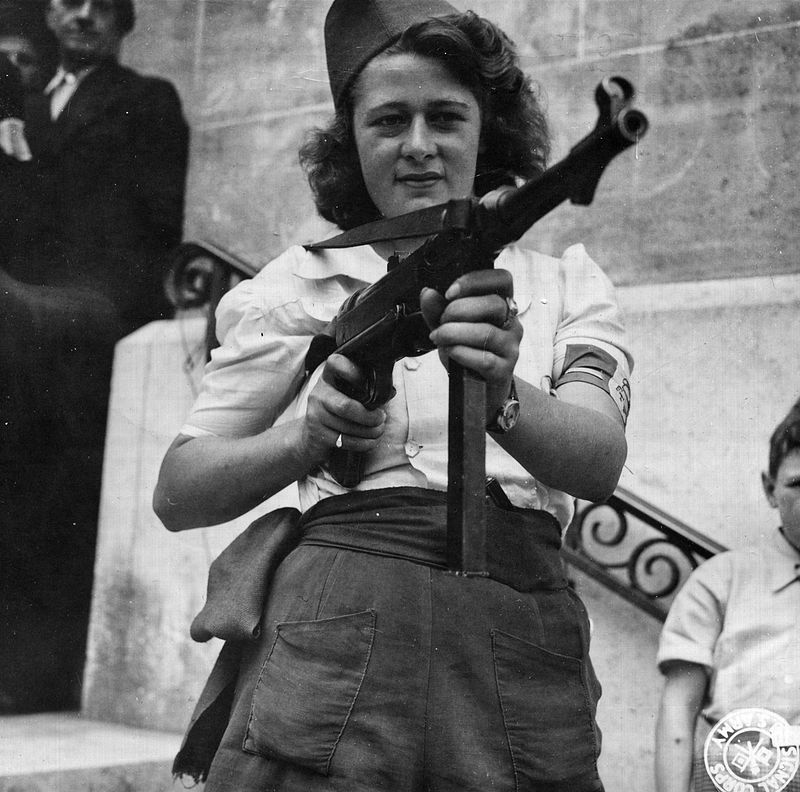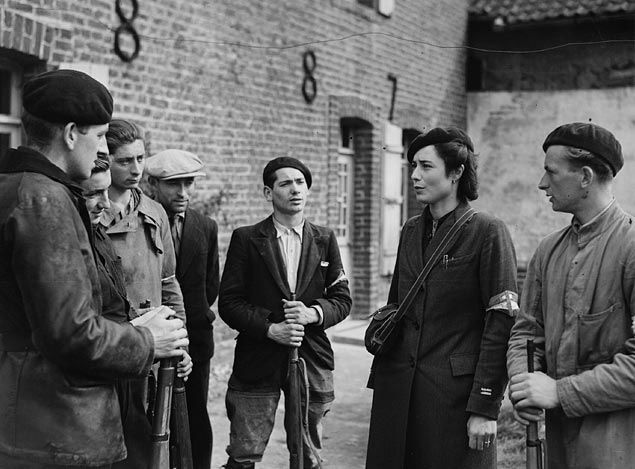Simone Segouin was born on the 3rd of October, 1925, near Chartres, around 55 miles from Paris. Her father was a farmer and she had three brothers, so she was used living in a world of men.
In 1944, when she was only 18 years old, she joined the Francs-Tireurs et Partisans – a combat group made up of militant communists and French nationalists. Her father served in the Great War and he was a great inspiration for her to join the resistance. She was known by her nom de guerre Nicole Minet.

She was given a new name and false identity papers; this was supposed to protect her family if she was captured by the Germans. Now, “Nicole Minet” was from Channel port of Dunkirk. The Germans bombed the port at the beginning of the war, so it was hard for them to check her details.
In the beginning, she stole a bicycle from a German military administrator and re-sprayed the bike in order to use it for delivering messages and to stake out targets.
Soon, she was trained to use weapons and participated in more dangerous missions than stealing a bike from the Germans. It didn’t take long for her to start blowing up bridges and even assisting in capturing German soldiers. She was involved in armed actions against enemy convoys and trains, attacks against enemy detachments, and other acts of sabotage.

She fell in love with Roland Boursier, who was commander of the Thivars Operation. They met in the countryside of her village. Roland asked her to be a runner for him, taking messages back to the Resistance group.
Later, he asked her to join them, and she said that she would be happy to do it.
The French newspaper Independent Eure-et-Loir described her as “one of the purest fighters of heroic French Resistance who prepared the way for the Liberation”.
They spotted her eating a baguette smeared with jam, her machine gun by her side, wearing an FTP armband. She said to the journalists that she was there in order to provide security for De Gaulle.

She helped to liberate Chartres, and then she linked up with France’s 2nd Armoured division, which was headed to Paris in order to liberate it. Paris was still a battle zone and Simone became part of it.
Simone killed two Germans in the fighting and also had assisted in capturing 25 German prisoners of war during the fall of Chartres.
When the war was over, she was awarded the prestigious Croix de Guerre and she was promoted to lieutenant. Women made up just 10% of The Resistance, but their presence helped force a shift in the way their gender was treated. For example, women voted for the first time in France in the local elections in 1945, and later in the national elections too.
Simone went on to become a paediatric nurse in Chartres, where her wartime exploits made her hugely popular. A street in Courville-sur-Eure was named for her.
